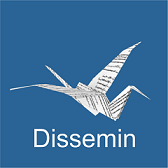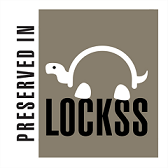Local Community Engagement with Geodiversity and Geotourism in Unprotected Areas: Insights from Baringo County, Kenya
Résumé
Kenya’s tourism has long centred on wildlife, overlooking the potential of geodiversity-rich landscapes. Despite geotourism’s global rise as a niche market, Baringo’s unprotected areas, with iconic geological features, remain underutilised. Moreover, little is known about local community understanding of the geodiversity and the potential of geotourism in the study area. This study, therefore, assessed local community’s knowledge of geodiversity and geotourism potential in Baringo County. Anchored on Kirkpatrick’s perception model, this study used a mixed methods research design. This study adopted purposive sampling, and primary data was collected from eight local community participants through focused group discussion and 385 tourists. Data were analysed using the Kirkpatrick perception model and validated using Student’s t-test. Findings revealed three knowledge topologies and that the local community knowledge significantly influenced geotourism perception (p < .05). The study concludes that varying community knowledge significantly influenced perceptions of geotourism potential, underscoring the importance of knowledge topologies in shaping community engagement. This study recommends strengthening community-based geotourism awareness and fostering stakeholders’ collaboration to promote geotourism, including the potential establishment of a UNESCO Global Geopark in Baringo County, Kenya
##plugins.generic.usageStats.downloads##
Références
Akama, J. S., Maingi, S., & Blanca, A. C. (2011). Wildlife conservation, safari tourism and the role of tourism certification in Kenya: A postcolonial critique. Tourism Recreation Research, 36(3), 281–291. https://doi.org/10.1080/02508281.2011.11081673 case of Crystal Cave, Western Australia. GeoJournal of Tourism and Geosites, 15(2), 142153.
Alturkistani A., Car J., Majeed, A., Brindley, D., Wells, G., & Meinert, E. (2019). Data collection approaches to enable evaluation of a massive open online course about data science for continuing education in health care: Case study. JMIR Medical Education. 2019;5(1): e10982) doi:10.2196/10982
Aman, R., Kipsang, W., & Koech, F. (2017, October 1). Baringo to host first geological park in East Africa. Sunday Nation, p. 39.
Avelar, S., Mansur, K. L., Anjos, S. C., & Vasconcelos, G. F. (2015). Community perceptions for geoconservation of a coastal area in Rio de Janeiro, Brazil. Geoheritage, 7, 275–283. https://doi.org/10.1007/s12371-014-0126-2
Baringo County Conservancies Association (BCCA). (2020). Strategic plan 2020–2024. Government Printers.
Benur, A. M., & Bramwell, B. (2015). Tourism product development and product diversification in destinations. Tourism Management, 50, 213– 224. https://doi.org/10.1016/j.tourman.2015.01.023
Beraaouz, M., Macadam, J., Bouchaou, L., Ikenne, M., Ernst, R., Tagma, T., & Masrour, M. (2019). An inventory of geoheritage sites in the Draa Valley (Morocco): A contribution to promotion of geotourism and sustainable development. Geoheritage, 11(1), 241–255. https://doi.org/10.1007/s12371-017-0256-x
Braun, V., & Clarke, V. (2006). Using thematic analysis in psychology. Qualitative Research in Psychology, 3(2), 77–101. https://doi.org/10.1191/1478088706qp063oa
County Integrated Development Plan (CIDP). (2013). Baringo County Integrated Development Plan. Government Printer. http://www.baringo.go.ke
County Integrated Development Plan (CIDP). (2018). Baringo County Integrated Development Plan. Government Printer.
Daniel, T. C. (2001). Whither scenic beauty? Visual landscape quality assessment in the 21st century. Landscape and Urban Planning, 54, 267–281.
Dowling, R. K. (2010). Geotourism’s global growth. Geoheritage. https://doi.org/10.1007/s12371-010-0024-7
Dowling, R. K. (2011). Geotourism’s global growth. Geoheritage, 3(1), 1–13. https://doi.org/10.1007/s12371-010-0024-7
Dowling, R. K. (2013). Global geotourism—An emergent form of sustainable tourism. Czech Journal of Tourism, 2(2), 59–79. https://doi.org/10.2478/cjot-2013-0004
Dowling, R., & Newsome, D. (2010). Geotourism: The tourism of geology and landscape. Goodfellow Publishers
Farmaki, A. (2012). A supply-side of coastal evaluation tourism diversification: A case of Cyprus. Tourism Planning and Development,9(2), 183– 203. https://doi.org/10.1080/21568316.2011.654431
Farsani, N. T., Coelho, C. O. A., & Costa, C. M. M. (2009). Geotourism as an opportunity for local communities’ participation in geoparks. In C. N. Neto de Carvalho & J. Rodrigues (Eds.), New challenges with Geotourism: Proceedings of the VIII European Geoparks Conference, Idanha-a-Nova, Portugal, 4–6 September 2009.
Farsani, N. T., Coelho, C. O. A., & Costa, C. M. M. (2010). Geotourism and geoparks as novel strategies for socio economic development in rural areas. Aveiro University.
Ginting, N., Marpaung, O. Y., Sinaga, F. A., Narisa, N., & Sirega, N. (2020). Geotourism and stakeholders: An approach to enhance geoconservation. IOP Conference Series: Earth and Environmental Science, 452, 012156. https://doi.org/10.1088/1755-1315/452/1/012156
Government of Kenya (GoK). (2022a). The new tourism strategy for Kenya (2021-2025). Nairobi: Government Printers.
GoK. (2022b). County Annual Development Plan. Department of Finance and Economic Planning, Baringo County. Nairobi: Government Printers.
GoK. (2019). Kenya population and housing census. Nairobi: Government Printers.
GoK. (2017). Baringo County spatial development plan (2017-2027). Nairobi: Government Printers.
GoK. (2013a). Ministry of Tourism Medium Term Plan (2013-2018). Nairobi: Government Printers
GoK. (2013b). Wildlife Conservation and Management Act 2013. Nairobi: Government Printers.
GoK. (2011). The Tourism Act, 2011. Nairobi: Government Printers. Retrieved from http://www.kenyalaw.org
GoK. (2007). Kenya Vision 2030: A globally competitive and prosperous Kenya. Nairobi: Government Printers.
Gray, M. (2008). Geodiversity: The origin and evolution of a paradigm. In Burek, C. V., & Prosser, C. D. (Eds.), The history of geoconservation (pp. 31–36). Geological Society, London.
Gray, M. (2004). Geodiversity: Valuing and conserving abiotic nature. Chichester: John Wiley & Sons Ltd.
Gunarathne, P., Fernando, A., & Perera, M. (2024). The influence of cultural dimensions on training effectiveness in the Sri Lankan hospitality industry. Journal of Hospitality and Tourism Management, 53, 1-12.
Hose, T. A. (2012). 3G’s for modern geotourism. Geoheritage, 4, 7–24. https://doi.org/10.1007/s12371-011-0052-y
Hose, T. A. (2008). Towards a history of geotourism: Definitions, antecedents and the future. Czech Journal of Tourism, 2(2), 59–79.
Hose, T. A. (2000). European geotourism—An overview of the promotion of geoconservation through interpretative provision. Symposium “Zukunftsfähiger Geotourismus—Ein Baustein zur lokalen Agenda 21”, Bad Urach.
Hose, T. A. (1995). Selling the story of Britain’s stone. Environmental Interpretation, 10(2),16–17.
Hose, T. A., & Vasiljević, D. A. (2012). Defining the nature and purpose of modern geotourism with reference to the United Kingdom and South-East Europe. Geoheritage, 4, 25–43. https://doi.org/10.1007/s12371-011-0050-0
Joyce, E. B. (2006). Geomorphological sites and the new geotourism in Australia. Geological Society of Australia.
Kayima, P. & Karasiewicz, T. (2024). Harnessing Geo‑Diversity: Geosites and Geotourism in Uganda's Albertine Region. Geoheritage (2025) 17:3 https://doi.org/10.1007/s12371-024-01053-6
KNATCOM. (2023). Baseline socio-economic survey: Mapping current nature-based products and services, and stakeholders’ needs assessment at the Baringo Great Rift Valley aspiring Geopark. KNATCOM.
Kenya National Bureau of Statistics. (2022). Economic survey 2022: Highlights of various reports. KNBS.
Kenya National Bureau of Statistics. (2018). Economic survey 2018. KNBS.
Kenya National Bureau of Statistics. (2016). Economic survey 2016. KNBS.
Kirkpatrick, D. L., & Kirkpatrick, J. D. (2006). Evaluating training programs: The four levels (3rd ed.). Berrett Koehler Publishers.
Kubalikova, L. (2013). Geomorphosite assessment for geotourism purposes. Czech Journal of Tourism, 2(2), 86–104. https://doi.org/10.2478/cjot-2013-005
Larsen, S., Wolff, K., Doran, R., & Øgaard, T. (2019). What makes tourist experiences interesting? Frontiers in Psychology, 10, 1603. https://doi.org/10.3389/fpsyg.2019.01603
Latjuba, A. Y., & Sari, R. (2022). Community perception of sustainable tourism destination management and development: A case study at Kampa Beach, Wawonii Island, Southeast Sulawesi. In Advances in Social Science, Education and Humanities Research (Vol. 660). Atlantis Press SARL.
Lee, T. H., & Jan, F. H. (2019). Can community-based tourism contribute to sustainable development? Evidence from residents’ perceptions of the sustainability. Tourism Management, 70, 368– 380. https://doi.org/10.1016/j.tourman.2018.09.003
Litheko, A., & Potgieter, M. (2021). Rural community perception of tourism development: A strategic tool in rural development. African Journal of Hospitality, Tourism and Leisure, 10(4), 1452–1465. https://doi.org/10.46222/ajhtl.19770720-172
Marlina, E. (2016). Geotourism as a strategy of geosite empowerment towards tourism sustainability in Gunungkidul Regency, Indonesia. International Journal of Smart Home, 10(5), 131–148. https://doi.org/10.14257/ijsh.2016.10.5.13
Mohamed, B., Macadam, J., Bouchaou, L., Ikene, M., Ernst, R., Tagma, T., & Masrour, M. (2019). An inventory of geoheritage sites in the Draa Valley (Morocco): A contribution to promotion of geotourism and sustainable development. Geoheritage, 11, 241–255. https://doi.org/10.1007/s12371-018-0293-5
Newsome, D., & Dowling, R. K. (2010). Geotourism: The tourism of geology and landscape. Goodfellow Publishers Ltd.
Newsome, D., & Dowling, R. K. (2006). Geotourism: Sustainability, impacts and management. Elsevier.
Ngwira, P. M. (2018). A review of geotourism and geoparks: Is Africa missing out on this new mechanism for the development of sustainable tourism? Geoconservation Research. https://doi.org/10.30486/ger.2019.66592
Ngwira, P. M. (2015). Geotourism and geoparks: Africa’s current prospects for sustainable rural development and poverty alleviation. Springer International Publishing.
Nordic Council of Ministers. (2003). Diversity in nature. Nordic Council of Ministers.
Odunga, P., & Maingi, S. (2011). The wildlife tourism market to Kenya (2002–2003). Journal of Travel and Tourism Marketing, 28(1), 62–80.
Ólafsdóttir, R., & Dowling, R. (2014). Geotourism and geoparks—A tool for geoconservation
and rural development in vulnerable environments: A case study from Iceland. Geoheritage, 6(1), 71–87. https://doi.org/10.1007/s12371-013-0095-3
Ólafsdóttir, R., & Tverijonaite, E. (2018). Geotourism: A systematic literature review. Geosciences, 8(7), 234. https://doi.org/10.3390/geosciences8070234
Reynard, E. (2014). Geosite. In A. S. Goudie (Ed.), Encyclopaedia of Geomorphology (Vol. 1). Routledge.
Scoon, R.N. (2020). Geotourism, Iconic Landforms and Island-Style Speciation Patterns in National Parks of East Africa. Geoheritage, (2020) 12, 66
SDGs. (2017). Transforming Tourism: Tourism in the Agenda 2030, March 2017, Berlin.
Sindiga, I. (1999). Tourism and African Development: Change and Challenge of Tourism in Kenya. African Studies Centre, Research Series, Hampshire: Ashgate
Sindiga, I. (1986). Population and development in Maasailand, Kenya (Doctoral dissertation, Syracuse University). Syracuse University SURFACE. https://surface.syr.edu/geo_etd/32
Štrba, L., Vravcová, A., Podoláková, M., Varcholová, L., Kršák, B. (2023). Linking Geoheritage or Geosite Assessment Results with Geotourism Potential and Development: A Literature Review. Sustainability 2023, 15, 9539. https://doi.org/10.3390/su15129539
Strba, L., & Rybár, P. (2015). Revision of the "Assessment of attractiveness (value) of geotouristic objects". Acta Geoturistica, Volume 6 (2015), Number 1, 30-40.
Tessema, G. A., Borg, J., Minale, A. S., Rompaey, A., Adgo, E., Nyssen, J., Asrese, K., Passel, S., & Poesen, J. (2011). Inventory and assessment of geosites for geotourism development in the eastern and southeastern Lake Tana region, Ethiopia. Geoheritage, 13, 43.
Udeshika, P.D.S. (2024). Training That Sticks: Rethinking Kirkpatrick for Hotels. Journal of Human Resource Management Perspective. Vol. 9(2), 2024. Doi: http://doi.org/10.4038/jhrmp.v912.10
United Nations World Tourism Organization. (2017). Measuring sustainable tourism and the SDGs (6th Meeting of the IAEG-SDG, Manama, Kingdom of Bahrain, March 2017).
United Nations World Tourism Organization. (2015). Tourism highlights. http://www.e.unwto.org/
UNESCO. (2024). International Geoscience and Geoparks Programme: Worldwide network of geoscientists to lay the foundation for our planet’s future geopark. https://www.unesco.org
UNESCO. (2019). Self-evaluation checklist for aspiring UNESCO Global Geopark (14th Session, Lombok, Indonesia, Sept. 2019).
UNESCO. (2017). Celebrating earth heritage, sustaining local communities. https://unesco.org/new/en/naturalscience/environment/earthscience/pjmckeeve@unesco.org
UNESCO. (2016). UNESCO Global Geoparks. UNESCO, Paris.
UNESCO. (2006). Global Geoparks Network. Geoparks Secretariat, Global Earth Observations Section: Division of Ecological and Earth Sciences, UNESCO, Paris, France.
Vujičić, M. D., Vasiljević, D. A., Marković, S. B., Hose, T. A., Lukić, T., Hadžić, O., & Janićević, S. (2011). Preliminary Geosite Assessment Model (GAM) and its application on Fruška Gora Mountain, potential geotourism destination of Serbia. Acta Geographica Slovenica, 51(2), 361–377. https://doi.org/10.3986/AGS51303
World Bank. (2010). Kenya’s tourism report: Polishing the jewel. Finance and Private Sector, Africa Region.
Yolal, M. (2012). Geotourism and geoparks: The case of Kizilcahamam-Çamlidere Geopark. Geo-Journal of Tourism and Geosites, 10(2), 193–203. http://gtg.webhost.uoradea.ro/
Zouros, N. (2007). Geomorphosite assessment and management in protected areas of Greece: The case of the Lavos Island coastal geomorphosites. Geographica Helvetica, 62, 169–180.
Copyright (c) 2025 Jackson Mengich Rerimoi, Francis Nyongesa Wegulo, PhD, Stanley Maingi Makindi, PhD

Ce travail est disponible sous la licence Creative Commons Attribution 4.0 International .




























